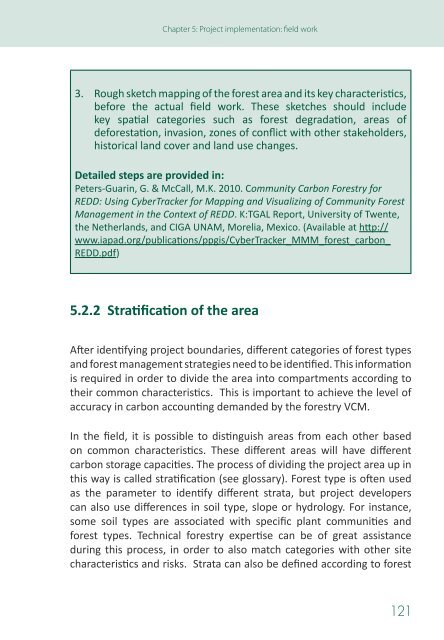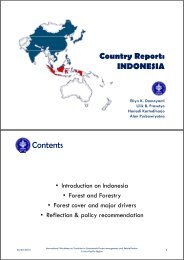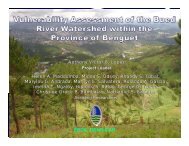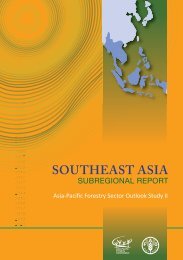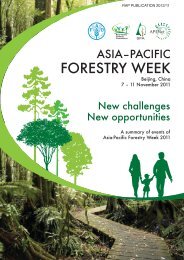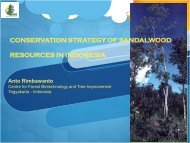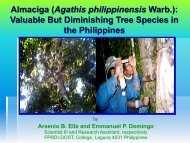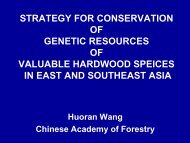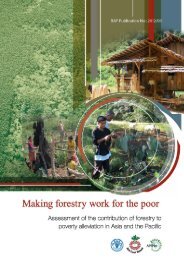Community guidelines for accessing forestry voluntary carbon ... - FAO
Community guidelines for accessing forestry voluntary carbon ... - FAO
Community guidelines for accessing forestry voluntary carbon ... - FAO
Create successful ePaper yourself
Turn your PDF publications into a flip-book with our unique Google optimized e-Paper software.
Chapter 5: Project implementation: field work<br />
3. Rough sketch mapping of the <strong>for</strong>est area and its key characteristics,<br />
be<strong>for</strong>e the actual field work. These sketches should include<br />
key spatial categories such as <strong>for</strong>est degradation, areas of<br />
de<strong>for</strong>estation, invasion, zones of conflict with other stakeholders,<br />
historical land cover and land use changes.<br />
Detailed steps are provided in:<br />
Peters-Guarin, G. & McCall, M.K. 2010. <strong>Community</strong> Carbon Forestry <strong>for</strong><br />
REDD: Using CyberTracker <strong>for</strong> Mapping and Visualizing of <strong>Community</strong> Forest<br />
Management in the Context of REDD. K:TGAL Report, University of Twente,<br />
the Netherlands, and CIGA UNAM, Morelia, Mexico. (Available at http://<br />
www.iapad.org/publications/ppgis/CyberTracker_MMM_<strong>for</strong>est_<strong>carbon</strong>_<br />
REDD.pdf)<br />
5.2.2 Stratification of the area<br />
After identifying project boundaries, different categories of <strong>for</strong>est types<br />
and <strong>for</strong>est management strategies need to be identified. This in<strong>for</strong>mation<br />
is required in order to divide the area into compartments according to<br />
their common characteristics. This is important to achieve the level of<br />
accuracy in <strong>carbon</strong> accounting demanded by the <strong>for</strong>estry VCM.<br />
In the field, it is possible to distinguish areas from each other based<br />
on common characteristics. These different areas will have different<br />
<strong>carbon</strong> storage capacities. The process of dividing the project area up in<br />
this way is called stratification (see glossary). Forest type is often used<br />
as the parameter to identify different strata, but project developers<br />
can also use differences in soil type, slope or hydrology. For instance,<br />
some soil types are associated with specific plant communities and<br />
<strong>for</strong>est types. Technical <strong>for</strong>estry expertise can be of great assistance<br />
during this process, in order to also match categories with other site<br />
characteristics and risks. Strata can also be defined according to <strong>for</strong>est<br />
121


